When cinematographer Trevor Forrest was appointed to shoot Celeste Ng’s novel Little Fires Everywhere for the screen with series creator Liz Tigelaar, he drew from his personal experience of living in Shelter Island in the Hamptons of New York state as the seasonal weather changes from the beautiful summer days to the freezing winter months. The cinematography was split between Trevor Forrest and his partner Jeffrey Waldron, each shooting four episodes a piece. Forrest shot “The Spark” (Ep. 1), “The Spider Web” (Ep. 4), “Duo” (Ep. 5), and “Find a Way” (Ep. 8); while Waldron took on “Seeds and All” (Ep. 2), “Seventy Cents” (Ep. 3), “The Uncanny” (Ep. 6), and “Picture Perfect” (Ep. 7). Forrest was tasked to design the overall look of the show with the ever-changing seasons in mind.
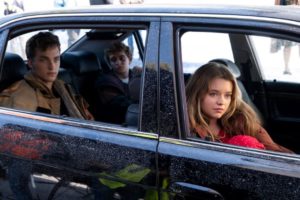
Each episode represents a shift in the weather. Forrest elaborated, “Episode one was the setup of both the fire, the winter, and the summer. Episode two and three all happened in the summer. Then episode four was coming to the end of summer and going into fall. We couldn’t do brown leaves so easily where we were, so we waited. We carried that through episode five. Jeff brought it through episode six and seven. Lastly, we had to land episode eight, which links back to where we started in the first few minutes of episode one. That number one is that frosted, freezing, cold winter and snow. In terms of the dramatic and emotional use of how the weather comes crashing down and contrast with that blazing fire. That blazing fire would not have been the same if we’d had a summer’s afternoon or early evening setting. The fact that they’re surrounded by snow and ice is fantastic, dramatic, and operatic because of it.”
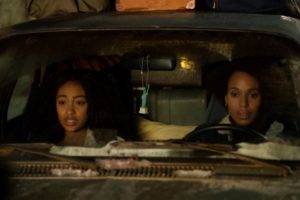
The lenses were specifically designed for the show, memories, and the dreams. “The show, we created the lenses with Panavision. We took a set of Panaspeeds to make lens see the L.A. light and not just a soft desaturated or less contrasty way, but something that had a color shift as well as a diffusion in part of the lens, while the contrast was still kept around the edges, which would emulate the light that we get in L.A., but will appear like the East Coast light we wanted to show. As we went through the seasons for those different periods, we would slightly shift those lenses. For the memories, we wanted to have a sense of looking through a glass bowl to see these memories and so anamorphic was the direction we went. For the nightmares, we wanted to have something that really felt very stark in contrast to everything else we created,” the cinematographer differentiated.
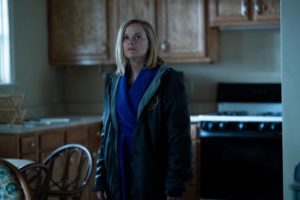
The color palette slowly morphed as the temperature dropped. “In the summer, slightly more yellow than orange highlights and then very clean shadows. That warmth changed slightly more magenta in the highlights and warmer tones throughout into the shadows for the fall. Then blue blacks were what we really played with and the desaturation of any other colors in winter,” the director of photography highlighted.
The lighting also played a significant role in the seasonal look. The cinematographer described, “We did augment with color forces, which were in the L.E.D. fitting that became more useful to us as it fell into winter because it’s much more cool, flat, but punchy, wintery light. We used big old tungsten lamps for all the summer and fall stuff. The light would flood in through the windows with this buoyant freedom of nature. It was changing that summer light into that East Coast light. Negative fill and natural daylight is how we created winter.”
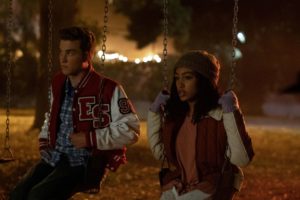
The fire was the biggest and most challenging aspect of the show. Forrest reflected, “It’s not only that thing that sets us up in the beginning of episode one. It’s the one that has to deliver to episode eight. We know the ending, we’re going to see it a second time, so how does that become interesting to look at, dramatic to tell the story, and multi-facetted so that we could have different reveals like the windows on fire, then the window fire licks underneath the guttering, then sweeps up the chimney, and pulls back to shot from behind Reese of all being on fire.”
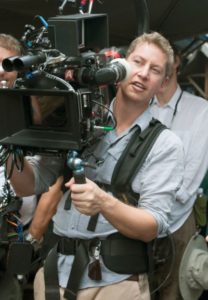
“We can create the weather and the look to create a place in camera to allow to feel to track the weather with a thriller and drama of the show. That was the key to the whole feeling of the show and elevating the drama. The pairing of weather with any drama is always a win.”
The seasonal fluctuating cinematography in Little Fires Everywhere created an innovative transformational approach and a dynamic impression of the series to push the visual cinematic latitude of the drama by changing the weather as a progression, camera placement, tailored design of new lenses, shifting the color palette, and altering the light.
Cinematographer Trevor Forrest is former winner of the Tribeca Film Festival in the category of Best Cinematography in a Narrative Feature for his work in Una noche. Other television series credits include Tell Me Your Secrets, I Am the Night, Underground, Deadbeat, and Bookaboo.





